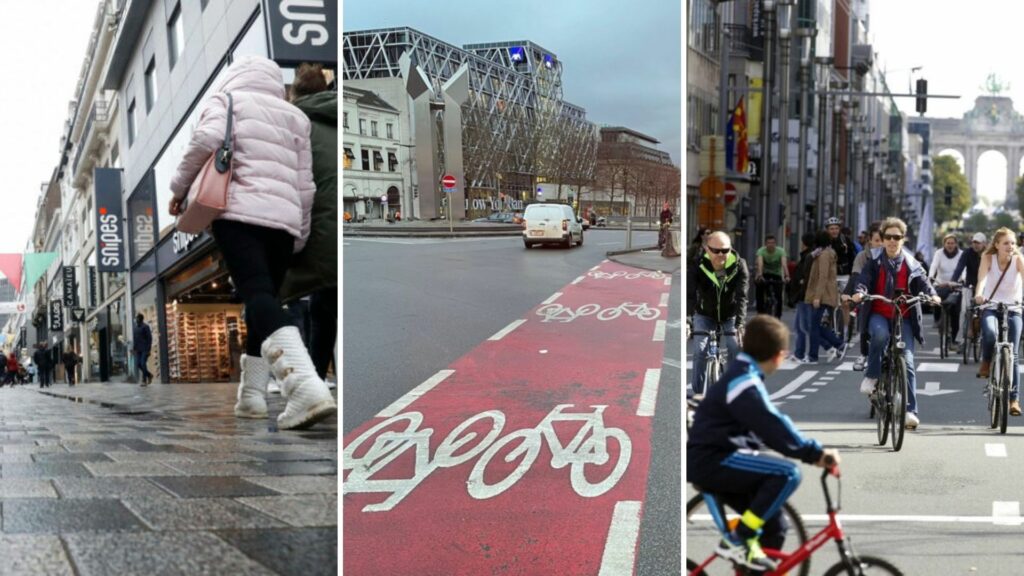The urge for cities to nurture a distinctive identity is baked into the mindset of local authorities around the world. It's more than just a tourist hook, mayors and urban planners give a lot of airtime to the "spirit" of their place which distinguishes it from elsewhere – the human element that transcends the brick and mortar we move between.
This desire to promote stand-out characteristics that go beyond physical limitations is especially strong in capital cities, where the pressure is on to exude a personality that can speak for the nation. It's a tricky concept to grasp and manipulate, both physical in the city's design and intangible in its culture. Is it Brussels that turns people into Bruxellois or the locals that make Brussels?
Perhaps the closest we can get to answering this conundrum is seeing how people react to changes in their environment. What better to gauge the mood of a neighbourhood than a mass outcry against modifications to the local infrastructure? Brussels is making a big effort to transform the town we know by pushing cars away from the centre of town and has recently implemented its Good Move plan which changes the traffic plan in central neighbourhoods.
Cue uproar and small-scale protests in affected areas that resulted in new road furniture being angrily removed. It seemed to be a resounding "no" from residents frustrated by modifications forced upon them. The authorities insist that they will press ahead with the new plans but will consult locals before trying again. Moreover, several traders in the centre voiced concerns that customers would be driven away to retail parks on the city outskirts.
So the news that since the plan's introduction visitors to central Brussels have actually increased might be seen as a silent vote by feet to allay criticisms that had been expressed so audibly. The centre of town has a lot to offer and it is difficult to reason that this is helped by allowing cars to clog up the districts packed with shops, restaurants, and cultural spaces.
Brussels City certainly has a way to go in re-greening the centre and could improve the transport connections for those visiting from further afield, but clearly the appeal of walking the streets is growing.
Have you noticed the change? Let @Orlando_tbt know.
Belgium in Brief is a free daily roundup of the top stories to get you through your coffee break conversations. To receive it straight to your inbox every day, sign up below:
1. Belgium will block EU energy agreements until gas price cap is adjusted
As long as a "workable proposal" for a European price cap is not on the table, Belgium will not sign any energy agreements, said Federal Energy Minister Tinne Van der Straeten at the start of the European Council of Ministers on Energy. Read more.
2. Boosting footfall: More visit central Brussels since Good Move

The 'Good Move' mobility plan has had no negative impact on the number of visitors to Brussels, with 1.25 million people visiting the city centre in October – 5.6% more than in July before the new circulation plan took effect. Read more.
3. Belgian Foreign Minister wears 'One Love' armband during Red Devils game
Belgium's Foreign Minister Hadja Lahbib attended the Red Devils' first match at the World Cup in Qatar on Wednesday, where she was seen wearing the much-discussed 'One Love' armband while speaking to FIFA president Gianni Infantino. Read more.
4. Belgium fortunate to beat Canada in opening World Cup match
Belgium narrowly beat Canada 1-0 at the Ahmad Bin Ali Stadium at the Qatar World Cup last night, in a performance which is unlikely to inspire confidence in manager Roberto Martinez’s pre-tournament prediction that the Red Devils could end up as the competition’s winners. Read more.
5. World's oldest cat nears 27, same age as her owner
At 26 years and 329 days, Flossie is not only almost as old as her 27-year old owner, she has also officially been recognised as the oldest living cat in the world. Read more.
6. The fall and rise of green Brussels
How did Brussels fit its many parks and gardens into the city? It is, in large part, down to a single landscape architect, Jules Buyssens. Author of almost a thousand projects across Belgium, he used his public position as head of the Brussels park system to promote a new national garden aesthetic. Read more.
7. Hidden Belgium: The Highest Spot in Belgium
An inexplicable stone staircase leading nowhere stands behind the car park at the Signal de Botrange. It was built in 1923 on the highest spot in Belgium, in the middle of the cold and bleak Hautes Fagnes moors. Read more.

